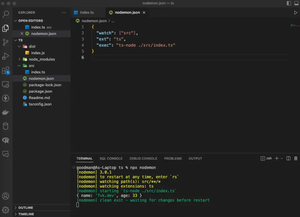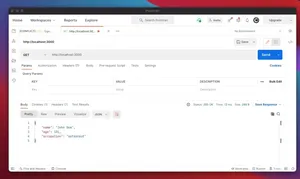Introduction
Choosing the right technology stack for backend development is a pivotal decision for any software project. It can have lasting impacts on performance, scalability, maintainability, and the success of the application as a whole. Among the vast array of programming languages and runtimes, Node.js and Go (often referred to as Golang) have emerged as two of the most popular choices for building robust backends. In this article, we’ll dive deep into the comparison between Node.js and Go, examining their strengths and weaknesses, to help you make an informed decision about which is better suited for your backend development needs.
Performance
Performance is often one of the top considerations when comparing backend technologies. Node.js operates on the V8 JavaScript engine and utilizes an event-driven, non-blocking I/O model that makes it lightweight and efficient, particularly for I/O-heavy applications like web servers. Golang, on the other hand, is a statically-typed, compiled language designed with concurrency in mind and is known for its high performance and efficient memory utilization. When it comes to raw computational power and ease of handling concurrent operations, Go generally takes the lead over Node.js.
Scalability
In terms of horizontal and vertical scalability, both Node.js and Go offer solid foundations. Node.js, with its asynchronous nature, scales well horizontally. However, it may face challenges handling CPU-intensive tasks. Go’s concurrency model based on goroutines makes it very scalable, providing an effective means of handling multiple tasks simultaneously without incurring too much overhead.
Development Speed and Productivity
Node.js and Go both score highly on developer productivity, but for different reasons. Node.js has a vast and mature ecosystem with a plethora of libraries that facilitate rapid development. Meanwhile, Go’s simplicity and clean syntax contribute to faster development cycles, although its ecosystem is not as extensive as Node’s.
Maturity and Community
The maturity of a technology and the strength of its community are important factors to consider when deciding on a backend platform. Node.js has a larger community and has been around longer, resulting in a broader range of third-party modules and industry adoption. Go, while newer, has a rapidly growing community and has been backed by Google, notably being used in projects like Kubernetes and Docker.
Use Cases
Both technologies have their ideal use cases. Node.js tends to excel in building real-time applications, REST APIs, and single-page applications (SPAs), while Go is often preferred for network services, microservices architecture, and performance-critical applications.
Learning Curve
The learning curve for each technology can vary depending on the developer’s background. JavaScript developers may find Node.js more accessible, whereas developers with experience in statically-typed languages may resonate more quickly with Go’s structure.
Ecosystem and Tooling
Node.js boasts an expansive ecosystem powered by npm, the largest software registry in the world. Go’s ecosystem is smaller but growing, and it offers a standard library that covers a wide range of functionalities with minimal dependencies.
Summary
In conclusion, the choice between Node.js and Go for backend development depends on the specific requirements and constraints of your project. Node.js offers ease of use and a massive ecosystem which is beneficial for rapid development and projects that require a high degree of flexibility. Go, with its emphasis on high performance and efficient concurrency, excels in scenarios where speed and resource efficiency are paramount. Both have their merits and can be the right choice in the right context, making it essential to consider the nature of your project before making a decision.

